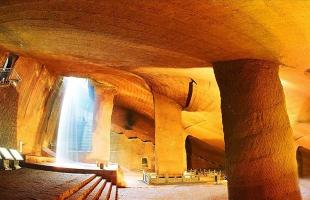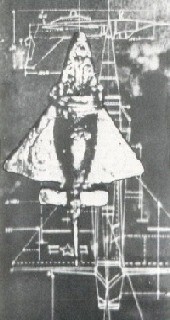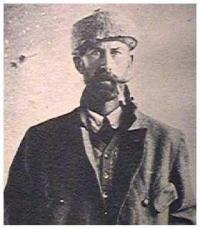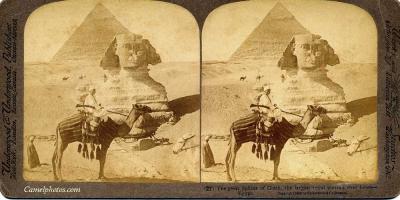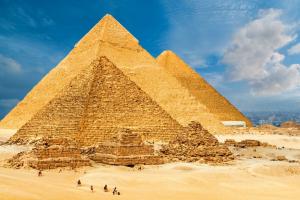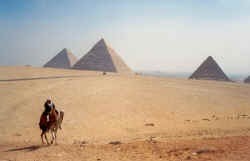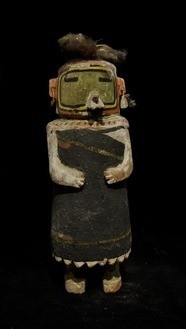The mysteries of Teotihuacán

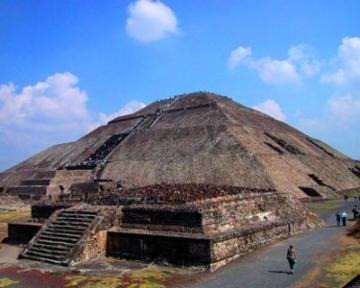
The archaeological zone of Teotihuacán, located approximately 40 kilometers northeast of Mexico City, was the scene, in 1520, of a bloody battle (Otumba). In that place, very different from how it is now, Hernán Cortés' army defeated thousands of Aztec soldiers, under the command of the new emperor Cuitlàhuac.
In that place there were some mounds that looked like hills. In reality, they were the majestic pyramids of Teotihuacán, built more than a thousand years ago by a mysterious people, hidden underground, sediments and bushes that were formed in more than ten centuries of abandonment.
The Pyramid of the Sun is grandiose: with a perimeter of 893.89 meters and a height of 71.17 meters, it is the third largest pyramid in the world, after Giza (Egypt) and Cholula (Puebla, Mexico). The other, the pyramid of the Moon, is a third smaller.
Analyzing the perimeter and height of the Pyramid of the Sun, an interesting fact appears: the ancient builders of Teotihuacan knew the Greek pi (3.14). The proof: if you multiply 71.17 x 4 x 3.14 you get 893.89. But the value of the Greek pi was officially discovered in Greece, by Archimedes, in the third century BC.
During the first years of the 20th century, some explorers and archaeologists discovered a surprising forgotten city, made up of the aforementioned pyramids, buildings arranged in geometric shapes, streets, temples, gardens and spacious atriums. It is estimated that the total area of Teotihuacán was 33.5 square kilometers, larger than the Rome of Augustus.
Even today, after decades of studies, research and archaeological conferences, the origin of the enigmatic people who built the pyramids is not clear, nor is the true name by which its inhabitants called themselves.
Indeed, Teotihuacán is a later Aztec term that meant “place where the Gods live”, or “City of the Gods”.
Another of the many mysteries of Teotihuacán is how the mounds of earth and sediments that hid the pyramids originated. Indeed, the period of a millennium seems too short to have caused the sedimentation of earth and bushes that hid the monuments in the 16th century. Some researchers suggested that it was the Teotihuacans themselves who hid the pyramids, for unknown reasons.
Centuries of hard work were required to build them. Many archaeologists maintain that pre-Columbian people did not know about the wheel, but in my opinion that cannot be proven. It is true that it was used (as evidenced by some stone toys), but probably not in chariot. The fact that there were no pack animals in America (such as horses or cattle) did not allow the diffusion of chariot technology, used in the old continent from the Bronze Age onwards.
However, this does not mean that the wheel was not used, for example using tree trunks to transport granite blocks, which weighed up to 45 tonnes, from mines to construction sites.
These stones were intelligently placed, fitting them together to erect the pyramids. It must be considered that for the Teotihuacanos, as for the rest of all pre-Columbian peoples, time did not represent a problem. The construction of a pyramid could never be considered completely finished. The initial structure was covered by larger ones and successively other levels were built. Sometimes this was done to honor the appointment of a new king or priest, or to commemorate a victory. Therefore, the pyramids contain at least one other inside. This was confirmed by the archaeologist Manuel Gamio in 1919, because while he was studying one of the walls of the temple of Quetzalcóatl (name of the Mesoamerican God of life, union of two words: quetzal, splendid bird with green feathers and coatl, feathered serpent, whose change of skin symbolized rebirth), he discovered that inside there was another structure, decorated with sublime sculptures that represented heads of feathered serpents and Gods of rain.
Some readers of comparative archeology spread the idea that the Teotihuacans descended from the Egyptians and that they built pyramids following those traditions. In reality, the Teotihuacán pyramids, like the other Mesoamerican ones, have a totally different function and design from the Egyptian ones. The latter were built as tombs and far from residential centers. On the contrary, the Mesoamerican ones were built in the active centers of the city and as some temples were built in the highest parts, they served as ceremonial and religious centers. They had the function of bringing the priests closer to the Divinities and of intimidating the populations, but also of increasing the prestige of the cities. Furthermore, from the top of these pyramids, the priests could better verify the position of the Sun, the Moon and the planets (particularly Venus), whose movements were of great importance for the Mesoamerican peoples.
The pyramids of Teotihuacán are separated by a street called “the causeway of the dead” (so called by some scholars because it was thought that there were tombs beneath it). This road, two kilometers long and forty meters wide, is oriented 15.5° in a northerly direction. In turn, the pyramid of the Sun is oriented 285.5° to the north (270°+15.5°=285.5°), exactly the direction of sunset on August 13. Several researchers attempted to provide a logical explanation for these data. Some proposed that the angular arrangement of the Teotihuacán pyramids has to do with the setting of the Pleiades or the rise of Sirius. Astronomer Antony Aveni, on the contrary, suggested that August 13, being the day of creation in Mayan cosmogony, also represented a key date for the Teotihuacanos.
According to some researchers, the residential center of Teotihuacán originated after the decline of the town of Cuicuilco, due to the eruption of the Xitle volcano, around the 6th century BC. In any case, until the beginning of the Christian era the population did not exceed five-thousand people. It was only around 150 BC that the city began to grow and construction of monumental buildings began.
The very favorable surrounding environment allowed surplus production of corn, potatoes, tomatoes, cocoa and other cereals and vegetables typical of the New World. The relative proximity of obsidian mines and the growing production of cotton allowed the Teotihuacanos to have valuable materials for barter, which was carried out for other products from the coastal area and Yucatan.
The city quickly assumed an important cultural role, and found itself to be a relevant center for the dissemination of myths, traditions and spirituality. It also had a growing political and economic weight, soon becoming one of the largest metropolises of antiquity.
It is estimated that around the 6th century AD, its population reached 200,000 inhabitants, thus placing it, along with Constantinople and Córdoba, among the largest cities in the world. It was probably governed as a city-state, by a king and by his exclusive elite, which had access to innovations and which had the means of production.
Teotihuacán, like Tiwanaku and later Cusco, was divided into four different areas, each used for different purposes: the cult sector and the commercial sector, with the market, in addition to the exclusively residential areas. It seems that different ethnic groups lived in each of these urban districts, such as the Zapotecs, the Mixtecs and the Totonacos.
The latter long claimed the role of founders of Teotihuacán, but until now their true origin remains a mystery. Unfortunately, since its ancient inhabitants did not leave remains of archaic forms of writing or of statues that indicate somatic or morphological characteristics, such as those of the Olmecs or Saint Augustine, and since they did not leave traces of mythological legends like those left by the Aztecs, any attempt to search for a remote origin falls into fantasy and is far from being a serious scientific analysis.
The sacred sector reserved for spirituality, located in the center of the city, was destined for the cult of the bird-feline-feathered serpent. With these rites, related to the cult of fertility, a common thread was sought to unite the three worlds (subhuman, middle and upper world), through symbols and colors: snake-red, feline-blue and bird-yellow, which also represented the levels of man's inner growth. Another of the fantastic artistic representations of Teotihuacán are the polychrome frescoes, which are still visible today inside its temples and palaces. In these paintings you can see war scenes, representations of priests or divine figures such as Tlaloc, lord of rain, or Huehuetéotl, God of fire.
Around 650 AD, the decline of Teotihuacán began. The city lost importance and was later abandoned. The reasons for this sudden decline are unclear. Some researchers proposed that there were invasions by barbarian peoples, as happened in ancient Rome, but in my opinion, as also happened in other Mesoamerican areas, the cause of the decline of Teotihuacán could have been insufficient agricultural production, especially considering the exponential increase in the population. All of this could have caused illness and death, with the consequent emigration of survivors to more fertile areas.
YURI LEVERATTO









